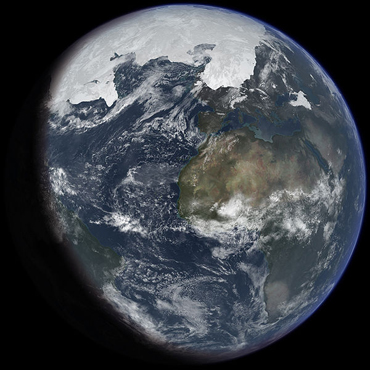As the last ice age drew to a close, thick sheets of ice that covered high northern and southern latitudes began to melt. Over several thousand years, that caused sea level to rise by around 60 or 70 feet.
But around 14,500 years ago, the flow of melting ice increased from a trickle to a torrent. Sea level jumped another 50 feet or so in just a few hundred years, drowning islands and causing coastlines to retreat by many miles.
 An artist's rendition of what Earth may have looked like during an ice age. Credit: Wikipedia
An artist's rendition of what Earth may have looked like during an ice age. Credit: WikipediaThis gusher is known as “meltwater pulse 1a.” And it’s the source of a scientific debate: Did most of the water come from the northern hemisphere or the southern?
By studying ocean sediments, scientists can track the rise and fall of sea level through the millennia. Those measurements help them understand how much water was frozen in ice sheets during ice ages. It also tells them how quickly the ice thawed -- information that’s crucial in the effort to understand the effects of modern climate change.
The last ice age began its retreat about 19,000 years ago, triggering the slow rise in sea level. Most of that early meltwater came from the northern hemisphere.
Early studies suggested that the big “pulse” came from the West Antarctic Ice Sheet. But later studies say it’s possible that a lot of the meltwater -- and maybe most of it -- came from the northern hemisphere. Just why there was such a massive melting in such a short time is still unclear.
Regardless of its source, meltwater pulse 1a demonstrates that a warming climate can cause sea level to rise in a hurry.

